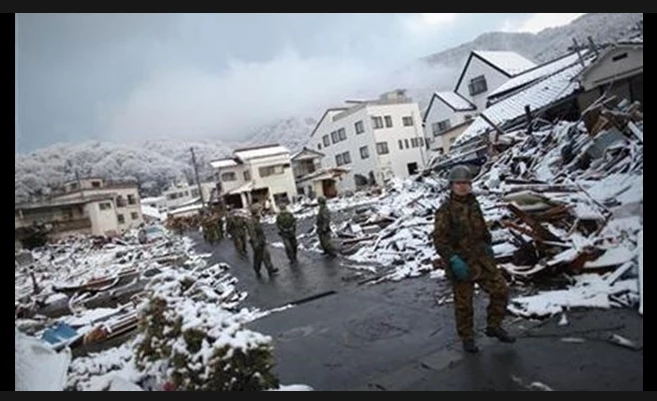Japan sharply revises down quake missing

Stay tuned with 24 News HD Android App

Japanese authorities sharply revised downwards on Tuesday the number of people unaccounted for following a major January 1 quake, while announcing a new death toll of 180.
The 7.5-magnitude quake flattened buildings, caused fires and knocked out infrastructure on the Noto Peninsula on Japan's main island Honshu just as families were celebrating New Year's Day.
Eight days later thousands of rescuers were on Tuesday battling blocked roads and poor weather to clear the wreckage as well as reach almost 3,500 people still stuck in isolated communities.
Figures released by Ishikawa regional authorities on Tuesday showed that 120 people remained unaccounted for while 180 were now confirmed as dead, up from 168 a day earlier.
On Monday authorities had more than tripled the number of missing to 323 after central databases were updated, with most of the rise related to badly-hit Wajima.
But since then "many families let us know that they were able to confirm safety of the persons (on the list)," Ishikawa official Hayato Yachi told AFP.
With heavy snow in places complicating relief efforts, as of Monday almost 30,000 people were living in some 400 government shelters, some of which were packed and struggling to provide adequate food, water and heating.
Almost 60,000 households were without running water and 15,600 had no electricity supply.
Road conditions have been worsened by days of rain that have contributed to an estimated 1,000 landslides.
At a daily disaster-relief government meeting on Tuesday, Prime Minister Fumio Kishida instructed ministers to "make efforts of resolving the state of isolation (of communities) and continue tenacious rescue activities".
Kishida also urged secondary evacuations to other regions outside the quake-hit area, top government spokesman Yoshimasa Hayashi told reporters.
Death toll from Japan quake rises above 200
The death toll from the powerful earthquake that flattened parts of central Japan on January 1 passed 200 on Tuesday, with just over 100 still unaccounted for, authorities said.
The 7.5 magnitude quake destroyed and toppled buildings, caused fires and knocked out infrastructure on the Noto Peninsula on Japan's main island Honshu just as families were celebrating New Year's Day.
Eight days later thousands of rescuers were battling blocked roads and poor weather to clear the wreckage as well as reach almost 3,500 people still stuck in isolated communities.
Ishikawa regional authorities released figures on Tuesday showing that 202 people were confirmed dead, up from 180 earlier in the day, with 102 unaccounted for, down from 120.
On Monday, authorities had more than tripled the number of missing to 323 after central databases were updated, with most of the rise related to badly hit Wajima.
But since then "many families let us know that they were able to confirm safety of the persons (on the list)", Ishikawa official Hayato Yachi told AFP.
With heavy snow in places complicating relief efforts, as of Monday almost 30,000 people were living in around 400 government shelters, some of which were packed and struggling to provide adequate food, water and heating.
Almost 60,000 households were without running water and 15,600 had no electricity supply.
Road conditions have been worsened by days of rain that have contributed to an estimated 1,000 landslides.
At a daily disaster-relief government meeting on Tuesday, Prime Minister Fumio Kishida instructed ministers to "make efforts of resolving the state of isolation (of communities) and continue tenacious rescue activities".
Kishida also urged secondary evacuations to other regions outside the quake-hit area, top government spokesman Yoshimasa Hayashi told reporters.
In Ishikawa prefecture's city of Suzu, a woman in her 90s managed to survive five days under the wreckage of a collapsed house before being saved on Saturday.
"Hang in there!" rescuers were heard calling to the woman, in police footage from the rainy scene published by local media.
Not all were so lucky, with Naoyuki Teramoto, 52, inconsolable on Monday after three of his four children's bodies were discovered in the town of Anamizu.
"We were talking of plans to go to Izu," a famous hot spring resort, after his daughter passed her high school entrance exam, he told broadcaster NTV.
Japan experiences hundreds of earthquakes every year, though most cause no damage because of strict building codes in place for more than four decades.
But many structures are older, especially in rapidly ageing communities in rural areas like Noto.
The country is haunted by the monster quake of 2011 that triggered a tsunami, left around 18,500 people dead or missing, and caused a nuclear catastrophe at the Fukushima plant.
